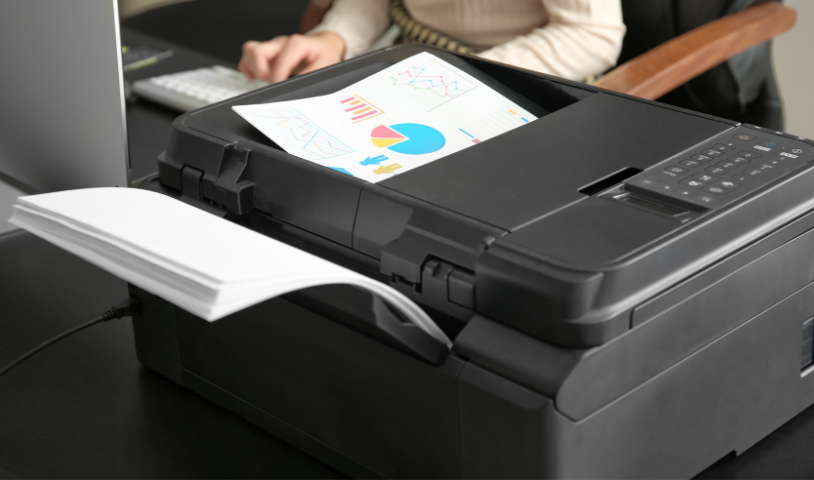Printers often become invisible. You might log into a different user account on the same computer and find the printer isn’t listed, or perhaps your previously installed printer has mysteriously vanished from your “Printers & scanners” list. While the printer is physically connected or wirelessly active on your network, Windows sometimes needs a little guidance to properly recognize and make it available for all users or after certain system changes.
This PrintSolve.info guide is designed to help you efficiently add an already-installed printer to another user account on the same Windows 10 or Windows 11 computer, or to simply re-add a printer that seems to have disappeared from your own device list without a full re-installation of its core drivers.
Important Disclaimer: PrintSolve.info offers independent, informational guides for printer setup and troubleshooting. We are NOT affiliated with, endorsed by, or sponsored by HP, Epson, Canon, Brother, Microsoft, Apple, or any other printer manufacturer or software company. We do not provide driver downloads directly, remote technical support, or repair services. Our mission is to equip you with reliable information for self-help.
Why Does a Printer Disappear or Not Show for All Users?
- User Profile Specificity: Some printer installations are tied to the user profile that performed the initial setup.
- Windows Updates: Major Windows updates can sometimes reset printer configurations.
- Driver Glitches: While the core driver might exist, a minor glitch can prevent Windows from listing the printer properly.
- Network Changes: If a network printer’s IP address changes, the old entry might become invalid.
The good news is that if the printer’s drivers are still present on your system, adding it back or making it available for another user is usually a quick process.
Scenario 1: Re-Adding a USB Printer to Your Account
If your USB printer was previously installed but no longer appears in your list of devices.
- Ensure Connection: Make sure your USB printer is physically connected to your computer and powered on.
- Access Printer Settings: Go to Start Menu > Settings > Bluetooth & devices > Printers & scanners.
- Add Device: Click the “Add device” button next to “Add a printer or scanner.”
- Windows Detection: Windows should automatically detect the connected USB printer. When it appears in the list, click on it and select “Add device.”
- Test Print: Once added, select your printer from the list, click “Manage,” and then “Print a test page.”
Scenario 2: Re-Adding a Wireless or Network Printer to Your Account
If your wireless or network printer is connected to your network (e.g., Wi-Fi router) but not showing on your computer.
- Verify Printer Network Status: Ensure your wireless or network printer is powered on and successfully connected to your Wi-Fi network (check its display for Wi-Fi status) or properly connected via Ethernet.
- Access Printer Settings: Go to Start Menu > Settings > Bluetooth & devices > Printers & scanners.
- Add Device: Click the “Add device” button next to “Add a printer or scanner.”
- Windows Detection: Windows will scan your network. Your printer should appear in the list once found. Click on it and select “Add device.”
- Test Print: Confirm by printing a test page.
Scenario 3: Adding a Printer for Another User Account on the Same Computer
If a printer is already installed and working for one user, but not for a different user logged into the same computer.
- Log In as the New User: Log into the Windows user account that needs access to the printer.
- Access Printer Settings: Go to Start Menu > Settings > Bluetooth & devices > Printers & scanners.
- Add Device: Click the “Add device” button next to “Add a printer or scanner.”
- Windows Detection: Windows should detect the printer (either via USB connection or over the network). Select it when it appears and click “Add device.”
- Driver Installation: Since the drivers are already on the system, Windows should quickly configure the printer for this new user profile.
- Test Print: Verify functionality by printing a test page.
What if the Printer Isn’t Listed After Clicking “Add device”?
If Windows doesn’t automatically find your printer, you might need to add it manually:
- In the “Add a printer or scanner” window, after a short scan, click “The printer that I want isn’t listed.”
- Choose an Option:
- “Add a local printer or network printer with manual settings”: Select this for USB printers. You’ll typically choose an existing port like “USB001 (Virtual printer port for USB).”
- “Add a printer using a TCP/IP address or hostname”: Select this for network/wireless printers if you know its IP address. Enter the printer’s IP address.
- “Add a Bluetooth, wireless or network discoverable printer”: This is often similar to the automatic scan but can sometimes find it if the initial scan misses.
- Select Driver: Windows will then prompt you to select the printer’s manufacturer and model. Since the driver should already be on your system, it should appear in the list. If not, click “Windows Update” to refresh the list, or “Have Disk…” if you downloaded a specific driver.
- Complete Installation: Follow the remaining prompts to name the printer and complete the setup.
Important: This is an independent guide for general information. For specific model details or official support, please refer to the manufacturer’s official website or your printer’s manual.
Conclusion
Printers can sometimes play hide-and-seek, but getting them re-listed or available for different user accounts is usually a straightforward process if the core drivers are already installed on your system. By understanding how Windows adds devices, you can quickly restore full printing functionality for yourself or other users.
